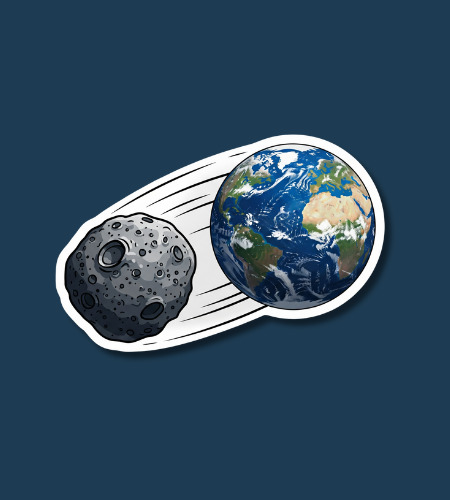International Asteroid Day, observed every year on June 30, commemorates the 1908 Tunguska event and raises global awareness about asteroid threats and the importance of planetary defense.
History of International Asteroid Day
This day marks the anniversary of the Tunguska event—on June 30, 1908, an asteroid exploded over Siberia, flattening approximately 2,150 km² of forest in what remains Earth’s largest recorded asteroid impact. In 2014, a coalition of scientists, including Dr. Brian May, Rusty Schweickart, Grig Richters, Danica Remy, and the late Stephen Hawking, launched Asteroid Day to educate the public about asteroids’ scientific role, resource potential, and risk to our planet.
By 2016, the United Nations officially recognized June 30 as International Asteroid Day via Resolution A/71/492—encouraging global efforts to enhance awareness, accelerate detection, and foster cooperation around planetary defense. Today, events—ranging from lectures to live global broadcasts—are hosted worldwide to spread these messages. 1
Why is International Asteroid Day important?
It’s fascinating how a single space rock event like Tunguska reshaped our understanding of Earth’s vulnerability and ignited a global movement for planetary defense. International Asteroid Day reminds us that with proper science, vigilance, and collaboration, we can actively protect Earth from future asteroid threats.
Near-Earth Objects (NEOs) are space rocks—asteroids and comets—that orbit close to the Sun, specifically within 1.3 astronomical units (about 195 million kilometers). Some of them pass dangerously near Earth. Those larger than 140 meters and within 0.05 AU (roughly 7.5 million kilometers) are considered potentially hazardous due to the scale of damage they could cause if they ever hit. 1
To date, scientists have discovered over 36,000 Near-Earth Asteroids, according to NASA’s Center for NEO Studies. History reminds us of their destructive power: on June 30, 1908, an asteroid exploded over Tunguska, Siberia, flattening 2,150 square kilometers of forest—the largest known asteroid impact in recorded history.
More recently, on February 15, 2013, another dramatic reminder struck: a fiery asteroid known as the Chelyabinsk superbolide entered Earth’s atmosphere at nearly 19 km/s and exploded over Russia. It was about 18 meters wide, weighed around 11,000 tons, and unleashed the energy of 440 kilotons of TNT—more than 30 times that of the Hiroshima bomb. It was the most powerful impact since Tunguska.
Recognizing the global threat NEOs pose, the United Nations Office for Outer Space Affairs (UNOOSA) has long advocated for international cooperation. Protecting Earth from an asteroid impact isn’t just a job for one nation—it’s a planetary issue requiring teamwork, foresight, and fast communication.
In 2013, the Committee on the Peaceful Uses of Outer Space (COPUOS) endorsed the idea of a unified global response. This led to the creation of two key initiatives in 2014:
- The International Asteroid Warning Network (IAWN)
A communication-driven group that helps governments understand the risks of an approaching asteroid and supports planning efforts for potential impact responses. - The Space Mission Planning Advisory Group (SMPAG)
A collaboration between space agencies focused on developing deflection strategies and building international consensus on how to defend Earth from a threatening NEO.
Together, these groups form our first line of planetary defense, turning what was once science fiction into serious science and global policy.
Moreover, it celebrates discovery—asteroids are ancient remnants from the solar system’s birth and potential reservoirs of resources for humanity. The day inspires curiosity, supports education, and fosters ingenuity in fields like space technology, orbital tracking, and impact mitigation.
- It honors the Tunguska event as a wake‑up call for Earth’s fragility.
- It encourages investment in detection and early-warning systems.
- It connects science, space exploration, and public education.
- It inspires global collaboration among agencies, universities, and enthusiasts.
- It highlights asteroids as keys to understanding planetary origins and innovation.
How to Observe International Asteroid Day
You don’t need a spaceship to join—June 30 is a great time to watch a documentary or attend a local (or virtual) Asteroid Day event. Many are free and cover topics like Near-Earth Object tracking, deflection missions, or the science of space rocks.
If you’re feeling hands-on, organize a small discussion group or classroom session. Talk about planetary defense, show maps of asteroid trajectories, and spark conversations about how we as a species can work to protect our planet—no PhD required.
- Tune into an Asteroid Day livestream or local talk.
- Watch a film or documentary on asteroid impacts and prevention.
- Browse online resources about NASA’s and ESA’s asteroid programs.
- Host a small group chat to discuss why planetary defense matters.
- Share a fact or infographic on social media with #AsteroidDay.
International Asteroid Day Dates Table
| Year | Date | Day |
|---|---|---|
| 2025 | June 30 | Monday |
| 2026 | June 30 | Tuesday |
| 2027 | June 30 | Wednesday |
| 2028 | June 30 | Friday |
| 2029 | June 30 | Saturday |
Subscribe to our newsletter and never miss a holiday again!

